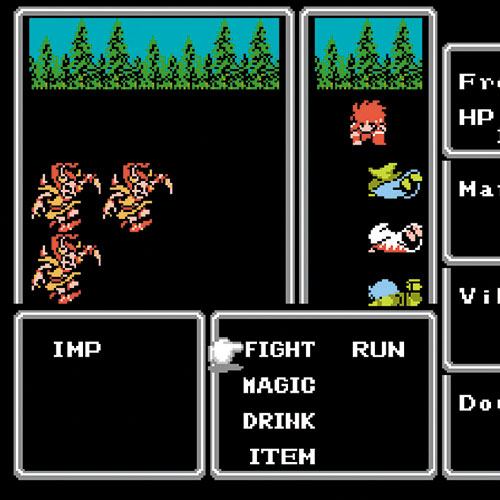PaigeFTW: A Classic Formula

So, building off last week’s discussion, let’s talk about what makes a classic RPG a classic — in other words, so good that dozens upon dozens of games come out each year trying to recapture that old magic.
I’m going to again use the original Final Fantasy as my model, as that is, to me, the definitive turn-based title. (I’m also generally not a huge Dragon Quest person.) As I see, there are five key components that the game established for the genre.
1) Simple menus: Menus should be clean and easy to navigate, with no questions about what each layer contains. The iconic “Fight Magic Item” menu, for example, with minor tweaks, is the foundation of every RPG menu, ever.
2) Intuitive map: Exploration should be allowed, but it should always be clear where you’re supposed to go — particularly if you take a break from playing and forget the current objective.
3) Speed: If it takes more than two seconds for a button command to trigger an action, it is way too slow. This is extra true for battles. Alternatively, button triggers that are too sensitive are equally frustrating.
4) Sweet-spot battle strategy: There has to be strategy involved in each battle, but not so much (at least in non-boss battles) that it becomes overwhelming. Players should be able to develop preferred tactics without being bogging down in minutiae.
5) Even quest distribution: The main quest must always be clear, and side quests should be appropriately spread out.
While these seem like very basic, common-sense factors in game development, think about it: it’s hard to find the perfect balance required for all five in one game. And all these factors must work harmoniously before story and writing even come into consideration.
The classics stay classic for a reason.











